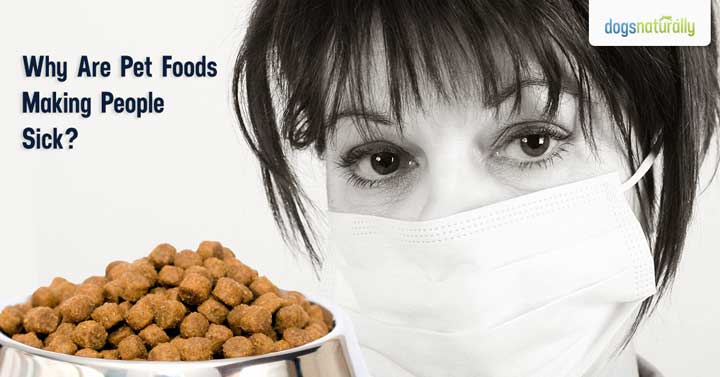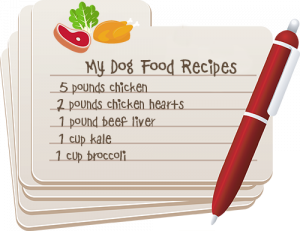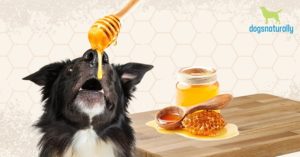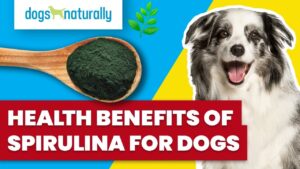Marketing is first and foremost in the processed pet food industry so we see photos of vibrant colored vegetables and juicy chunks of meat, fish and fowl dripping in gravy and juices. In descriptive, appetite-whetting prose, the packaging lists all the benefits, healthy attributes and natural flavors we’ll find within.
What’s not to like?
Plenty, according to an anonymous former food chemistry laboratory employee! In an August 2015 interview she explained why she won’t feed any pet products containing natural flavors to her dog:
“Most people believe natural flavors refer to healthful extracts of real foods. Not necessarily. Many are harmful chemical derivatives. Many endanger the employees who manufacture them! Some damage the individuals who consume them. Natural flavors can be so dangerous that the facility must provide additional ventilation, training in proper handling, provision of special equipment to protect workers from carcinogens, and employee access to MSDS (Material Safety Data Sheets). Unfortunately, these guidelines are often not followed and human health has been compromised. The result for me is autoimmune disease with fatigue, a compromised respiratory system and shortness of breath.”
What Are Natural Flavors?
Look at pet food labels and see how many foods contain natural flavors. The FDA allows vague terminology in the labeling of many foods. Manufacturers say this vague terminology is necessary to protect proprietary tastes and smells. So what does it mean when we see these words in a pet food ingredient list?
In the United States, natural flavorants may include any of the following:
The essential oil, oleoresin, essence or extractive, protein hydrolysate, distillate or any product of roasting, heating or enzymolysis, which contains the flavoring constituents derived from a spice, fruit or fruit juice, vegetable or vegetable juice, edible yeast, herb, bark, bud, root, leaf or any other edible portions of a plant, meat, seafood, poultry, eggs, dairy products, or fermentation products thereof, whose primary function in food is flavoring rather than nutritional.
In the United Kingdom natural flavors are simply defined as:
A flavoring substance which is obtained, by physical, enzymatic or microbiological processes, from material of vegetable or animal origin which material is either raw or has been subjected to a process normally used in preparing food for human consumption and to no process other than one normally so used.
Clearly, the problem is that if the label says natural flavor, you don’t know exactly what that includes.
The goal of adding a flavorant is to mimic or enhance a natural taste and aroma. There are hundreds of natural flavors. Not all natural flavors are bad, but two of the most notorious natural flavors are monosodium glutamate (MSG) and diacetyl. If we’re avoiding these products ourselves, shouldn’t our dogs too?
Why Are Natural Flavors Added To Foods?
Flavor is produced by combining taste and aroma. Food chemists know that the better a food smells the more we’ll eat. Flavor diminishes when products are manufactured in large batches. A small homemade brew of beer contains its own natural flavor. In a large brewery, this flavor diminishes. Manufacturers commonly add additional natural flavors to enhance the aroma and taste of the product.
MSG is heavily used in Asian cuisine and other foods as a flavor enhancer. It’s also the main ingredient in products used to manage coprophagia, the practice of a dog eating its own excrement. Apparently it alters the flavor of the fecal matter!
Diacetyl is put into microwavable popcorn to imitate butter flavoring. Food flavorings containing diacetyl are used in other snack foods, candies, baked goods and pet foods including canned foods, dry kibble and treats. Be sure to check raw pet food labels as well.
Some Pet Foods With Natural Flavors
- Hill’s® Prescription Diet® w/d® Canine
- Hill’s® Ideal Balance™ Breakfast
- Medleys™ with Country Chicken & Egg
- BLUE Freedom® Grain-Free Indoor Chicken Recipe
- Wellness TruFood Baked Blends Adult Recipe Grain-Free Dry Dog Food
- Freshpet Select Chunky Beef, Vegetables & Brown Rice Dog Food Recipe
- BENEFUL® Wet Dog Food Chopped Blends™
- Innova Adult Canned Dog Food
- Merrick Grain Free Real Salmon & Sweet Potato Adult Dog Food
- Iams ProActive Health Indoor Weight & Hairball Care Dry Cat Food
- Natural Balance Limited Ingredients
- Diets Sweet Potato & Venison Dog Food
- Meow Mix – Tender Centers Tuna & Whitefish Flavors
Are Natural Flavors Dangerous?
The U.S. Department of Labor Occupational Safety & Health Administration (OSHA) says, “Diacetyl is a natural byproduct of fermentation and is also synthesized by chemical manufacturers. It is produced during the natural fermentation of beer and during the roasting of coffee.”
According to a university professor and food chemist with experience in the production of diacetyl, its safe use is controversial.
He explains that at levels where diacetyl is normally present in foods, it’s safe. When diacetyl is extracted and synthesized in large volumes to become a food enhancing natural flavor, it becomes a danger to employees who inhale it and a potential danger to those who ingest the residues produced from the processing. According to this same expert source, the safety of diacetyl is dependent on the combination of proper synthesis and raw materials. If an error occurs in this process, a carcinogenic residue can be produced. This is a secondary metabolite, which is banned by the FDA.
A good analytical chemist in the facility should test every batch for the unwanted presence of this type of substance. Some analytical chemists don’t know to test for this and some don’t have the correct GCMS (gas chromatography-mass spectrometry) equipment to detect this potential danger.
The production of diacetyl is a global process. The FDA doesn’t want carcinogens to be present in natural flavors nor in human or pet foods. However, they don’t control all global manufacturing guidelines and many manufacturers are unaware of this danger and how to detect it. In a letter to the editor of the New England Medical Journal, a PhD scientist stated that due to its chemical structure (and the way it interacts with certain raw materials), diacetyl should be considered a carcinogen and banned by the FDA.
OSHA admits that many current MSDS do not reflect any new information regarding health effects and respiratory hazards associated with diacetyl.
They recommend that chemical manufacturers convey information that animals exposed to diacetyl experienced damage to the nose and upper airways, including severe damage to cells lining the respiratory tract. Evidence indicates that exposure to flavorings containing diacetyl is associated with adverse effects on the respiratory system including bronchiolitis obliterans, a debilitating and potentially fatal lung disease. This is so common in the food industry that it’s called “popcorn lung!” Just think about how many pet owners share their microwave popcorn with their pets!
RELATED: Why you should avoid microwaved food for your dog …
MSG
In 1908, Professor Ikeda of Tokyo described the MSG taste as “umami.” After isolating glutamate as the source of umami taste from the traditional Japanese kelp broth, Ikeda invented a method to isolate glutamate from wheat protein (gluten). Ikeda developed the seasoning monosodium glutamate (MSG). Today, MSG can be made by the fermentation of starches such as sugar cane or molasses and then does not contain gluten. Glutamate is a natural, necessary amino acid. MSG is the sodium salt of glutamate.
According to David Wolfe, author of Superfoods: The Food and Medicine of the Future, and Dr Russell Blaylock, author of Excitotoxins: The Taste that Kills, MSG is a byproduct of soybean chemistry and is an excitotoxin.
Excitotoxins can cause brain damage, especially in developing babies. Small amounts of MSG have been shown to cause nerve and brain damage in young laboratory animals.
Glutamate is a natural amino acid that functions as a neurotransmitter. When it’s in excess in the body from consuming high concentrations, nerve impulses are rapidly fired to the point of exhaustion: excited to death!
New York Times bestselling author and holistic MD Andrew Weil says he would rather not eat products containing an MSG additive. He warns his readers to look for “no MSG” on commercial broth labels. Many people believe MSG may be a cause of their migraine headaches.
How many pets are irritable or seem to have unexplained agitation or discomfort? Could they be suffering from a headache or abnormal neurostimulation from a hidden source of MSG in their food or treats? Aggressive and phobic behaviors seem to be on the rise in humans and pets. Similarly, the number of canine and feline patients with nasal and oral cancers seen in veterinary practice today is epidemic.
To think that we may be unintentionally feeding our pets neurotoxins and carcinogens on a daily basis is horrifying!
What can we do to stop food manufacturers from adding natural flavors and let us know what they are?
First, read labels and stop purchasing foods with natural flavors! Certainly many natural flavors may be harmless, but until we can be assured of the presence of only true, safe, real food ingredients in our foods, is it worth the risk to consume those that may have serious adverse effects?
Consumer demand can change manufacturing practices and cause industrial changes much faster than government regulatory efforts. Your awareness and efforts to share your new knowledge with other pet owners will quickly impact the pet food and treat business.
From November 2015 Dogs Naturally Magazine













